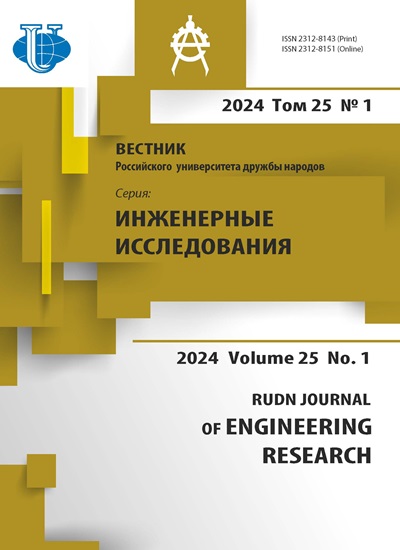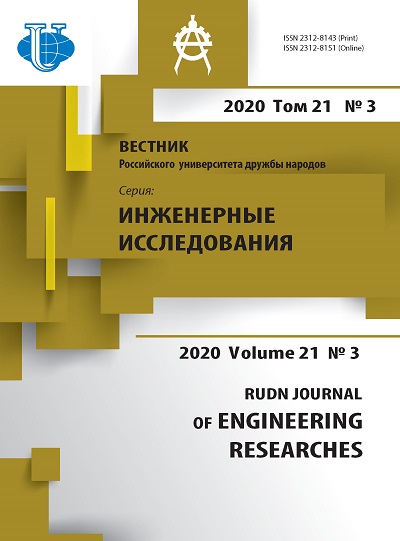Development of a design methodology for heat-loaded dimensionally stable elements of carbon plastic construction for a remote sensing of the Earth space equipment
- Authors: Gorodetskii M.A.1, Mikhaylovskiy K.V.1
-
Affiliations:
- Bauman Moscow State Technical University (National Research University of Technology)
- Issue: Vol 21, No 3 (2020)
- Pages: 159-165
- Section: Aviation and rocket and space technology
- URL: https://journals.rudn.ru/engineering-researches/article/view/25555
- DOI: https://doi.org/10.22363/2312-8143-2020-21-3-159-165
Cite item
Full Text
Abstract
One of the most important tasks of the Federal Space Program of Russia for the period until 2025 is the creation of spacecraft for remote sensing of the Earth. An integral part of the design of this class spacecraft is the determination of the parameters of the orbits that are most effective from the standpoint of information content, energy supply and the duration of active existence. In orbital flight, the temperature state of spacecraft in a complex way varies in time and space. The inhomogeneous temperature field of the structural elements of spacecraft can cause shape distortion, which adversely affects the performance of targets. A technique for a comprehensive analysis and determination of the platform composite design parameters, which is part of the spacecraft for remote sensing of the Earth is proposed. The conditions of thermal loading for flight in a sun-synchronous orbit are considered and mathematical modeling of the operating conditions that ensure the effective operation of such spacecraft is performed. The results of modeling the thermal regime of options for composite platform designs are presented. The technique will be useful in determining the complex of orbital characteristics of the Earth remote sensing satellite at the stage of technical proposals.
About the authors
Mikhail A. Gorodetskii
Bauman Moscow State Technical University (National Research University of Technology)
Author for correspondence.
Email: Konst_mi@mail.ru
postgraduate of the Department SM-13 Rocket and Space Composite Structures of the Bauman MSTU
5 2-ya Baumanskaya, bldg 1, Moscow, 105005, Russian FederationKonstantin V. Mikhaylovskiy
Bauman Moscow State Technical University (National Research University of Technology)
Email: Konst_mi@mail.ru
Associate Professor of the Department SM-13 Rocket and Space Composite Structures of the Bauman MSTU; Candidate of Science (Eng.)
5 2-ya Baumanskaya, bldg 1, Moscow, 105005, Russian FederationReferences
- Meseguer J, Pérez-Grande I, Sanz-Anrés A. Spacecraft thermal control. 1st ed. Cambridge: Woodhead Publishing Limited; 2012.
- Schaub H, Junkins JL. Analytical mechanics of space systems. 2nd ed. Reston, VA; 2009.
- Montenbruck O, Gill E. Satellite orbits: models, methods, applications. Berlin: Heidelberg Springer - Verlag; 2000.
- Hastings D, Garrett H. Spacecraft-Environment interactions. Cambridge: Cambridge University Press; 2004.
- Hengeveld DW, Mathison MM, Braun JE, Groll EA, Williams AD. Review of Modern Spacecraft Thermal Control Technologies. HVAC&R Research. 2010;16(2): 189-220.
- Reznik SV, Prosuntsov PV, Mikhailovsky KV, Shafikova IR. Material science problems of building space antennas with a transformable reflector 100 m in diameter IOP. Conference Series: Materials Science and Engineering. 2016;153(1):10.
- Sayapin SN, Shkapov PM. Kinematics of deployment of petal-type large space antenna reflectors with axisymmetric petal packaging. J. of Machinery Manufacture and Reliability. 2016;45(5):387-397.
- Reznik SV, Prosuntsov PV, Azarov AV. Substantiation of the structural-layout scheme of the mirror-space-antenna reflector with a high shape stability and a low density per unit length. J. Eng. Phys. Thermophy. 2015;88(3):699-705.
- Golovatov D, Mikhaylov M, Bosov A. Optimization of technological parameters of impregnation of load-bearing rod elements of reflector made of polymer composite materials by transfer molding method. Indian J. of Science and Technology. 2016;9(46):107492.
- Prosuntsov PV, Reznik SV, Mikhailovsky KV, Novikov AD, Zaw Ye Aung. Study variants of hard CFRP reflector for intersatellite communication. IOP Conf. Series: Materials Science and Engineering. 2016;153(1):7.
- Reznik SV, Novikov AD. Comparative analysis of the honeycomb and thin-shell space antenna reflectors MATEC Web of Conferences. Thermophysical Basis of Energy Technologies. 2017;92(01012):1-5. doi: 10.1051/ matecconf/20179201012.
- Escobar E, Diaz M, Zagal JC. Evolutionary design of a satellite thermal control system: real experiments for a CubeSat mission. Applied Thermal Engineering. 2016; 105:490-500.
- Mikhaylovskiy KV, Gorodetsky MA. Development of method for determining and correcting parameters of the working orbit of the earth remote sensing satellite. RUDN Journal of Engineering Researches. 2017;18(3): 361-372. (In Russ.) https://doi.org/10.22363/2312-8143-2017-18-3-361-372.
- Bolton W. Engineering materials: pocket book. Newnes, 2000.
- Latyev LN, Petrov VA, Chekhovskoy VY, Shestakov EN. Izluchatelnye svojstva tverdyh materialov [Emitting Properties of Solid Materials]. Moscow: Energiya Publ.; 1974. (In Russ.)
















